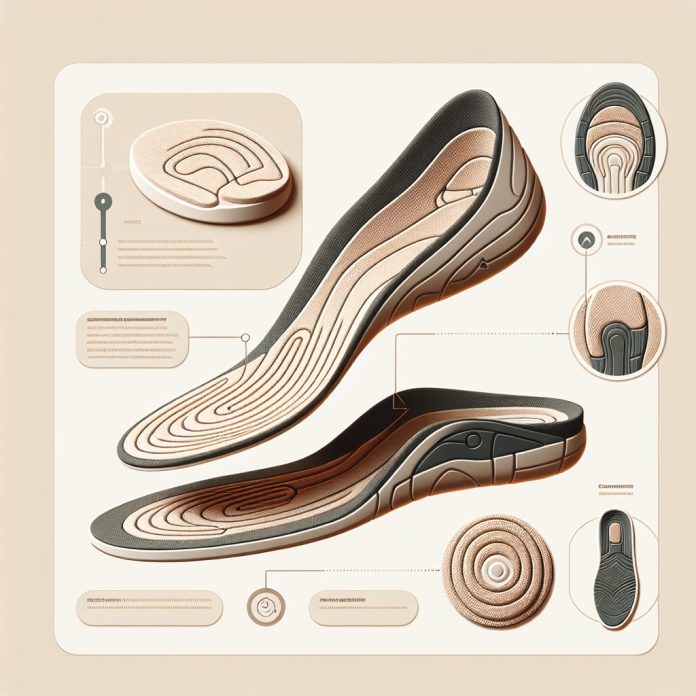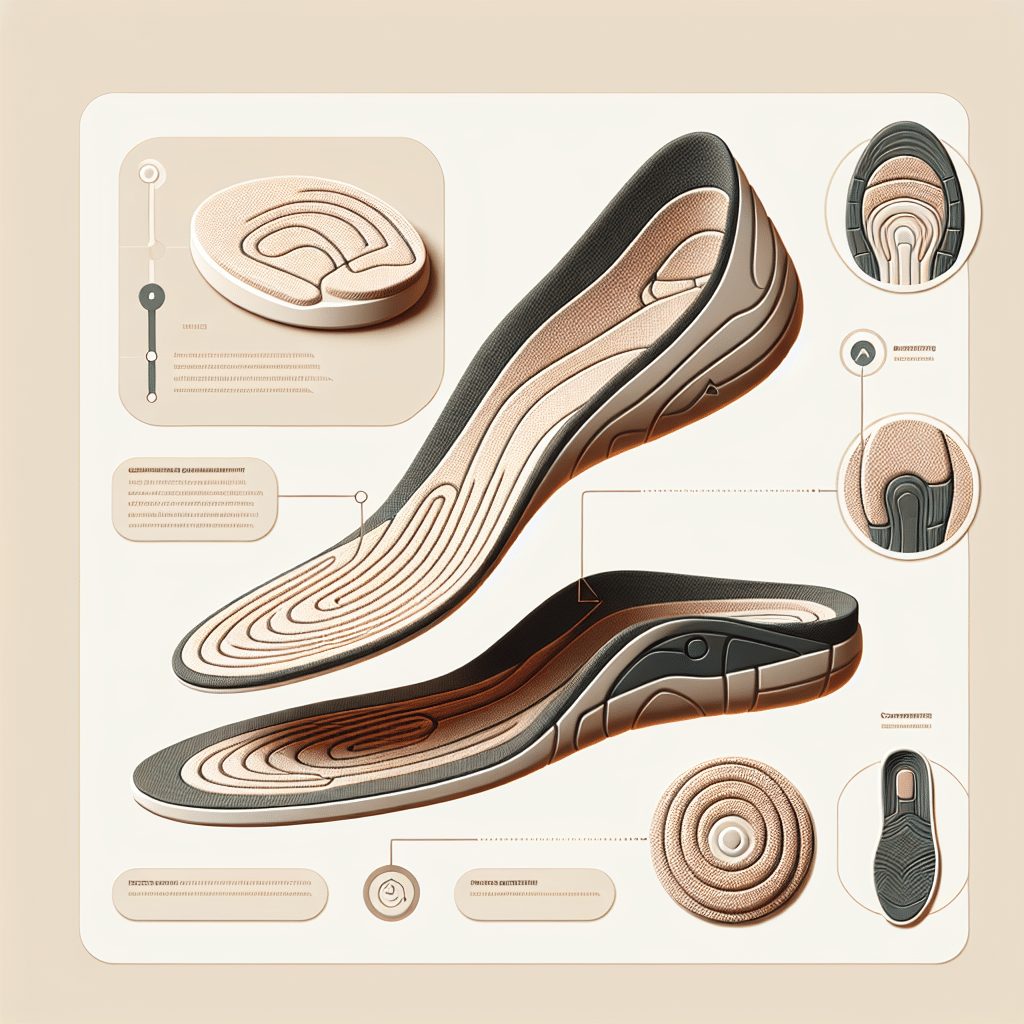Imagine walking on a cloud, each step cushioned and supported by a magical force. Well, that’s the kind of fantastic experience that insoles can provide for your arches.
These sneaky inserts not only offer a substantial amount of support and stability for your arches, but they also play a crucial role in improving overall foot comfort and preventing foot pain. So, let’s take a closer look at how insoles work their magic and keep your arches happy throughout the day.
The Importance of Arch Support
Your feet are essential to your body, carrying you through the day and supporting your weight. The arch of your foot plays a crucial role in maintaining stability and balance, making arch support essential for overall foot health. Understanding the importance of arch support is critical to caring for your feet and preventing potential discomfort or pain.
Understanding the Role of the Arch
The arch of your foot acts as a natural shock absorber, distributing the weight and pressure during walking or running. It effectively absorbs the impact, minimizing stress on your muscles, tendons, and joints. This curved structure helps maintain stability, balance, and overall foot alignment, allowing for a smooth and efficient gait.
The Impact of Insufficient Support
Various issues can arise when your arches lack proper support, impacting your overall foot health. Insufficient arch support can lead to overpronation, a condition where your foot rolls inward excessively. This misalignment can strain your muscles and ligaments, leading to discomfort, pain, and even injuries such as plantar fasciitis. Lack of arch support can also cause flat feet, where the arches collapse, leading to balance issues and discomfort. Therefore, investing in proper arch support is crucial to prevent such problems and maintain optimal foot health.
Types of Insoles
When it comes to providing arch support, different types of insoles cater to various foot conditions and needs. Let’s take a look at the three main types of insoles commonly available:
Orthotic Insoles
Orthotic insoles are designed to align your feet properly, providing customized support to address specific foot conditions. These insoles benefit individuals with flat feet, high arches, or other structural abnormalities. They work by redistributing pressure, correcting foot alignment, and providing necessary support to the arches.
Arch Cushioning Insoles
If you experience discomfort or pain due to the pressure on your arches, arch cushioning insoles may be the right choice. These insoles are crafted with extra padding around the arch area, reducing impact and providing cushioning to alleviate discomfort. They are ideal for individuals with sensitive foot arches or those who engage in high-impact activities such as running.
Arch Support Insoles
Arch support insoles offer a combination of cushioning and structural support to maintain proper foot alignment. They are designed to evenly distribute pressure across the foot and provide additional stability to prevent overpronation. These insoles are versatile and can be used by individuals with different foot arch types.
Benefits of Arch Support Insoles
Investing in arch support insoles can benefit your overall foot health and comfort. Let’s explore some of the advantages these insoles offer:
Improved Foot Alignment
Arch support insoles promote proper foot alignment, aligning your entire skeletal system. Distributing pressure evenly, they help keep your feet, ankles, knees, and hips in alignment. This can alleviate discomfort and pain caused by poor foot alignment and enhance your overall balance and stability.
Reduced Discomfort and Pain
If you frequently experience foot discomfort or pain, arch support insoles can be a game-changer. By providing additional support to your arches, these insoles reduce the strain on your muscles and ligaments, relieving pain and making everyday activities more comfortable. Whether you suffer from conditions like plantar fasciitis or experience general foot fatigue, arch support insoles can offer significant relief.
Prevention of Overpronation
Overpronation, where the foot rolls inward excessively, can lead to various foot problems, including plantar fasciitis, shin splints, and Achilles tendonitis. Arch support insoles help control excessive pronation by providing the necessary stability and support to align your foot correctly. By controlling foot motion, these insoles can prevent overpronation and alleviate the associated risks and discomfort.
Enhanced Balance and Stability
Proper foot alignment and stability are essential for maintaining balance, especially during dynamic movement activities. Arch support insoles aid in this aspect by providing your arches with the necessary support and stability. This can enhance your balance, reduce the risk of falls or injuries, and improve your overall performance in sports or fitness training activities.
Mechanism of Arch Support
Understanding how arch support insoles work can help you appreciate their benefits. These insoles provide the support and stabilization necessary for optimal foot health by employing specific mechanisms. Let’s delve into the three main ways arch support insoles function:
Evenly Distributing Pressure
Arch support insoles are designed to distribute pressure evenly across the foot. Instead of concentrating the weight on specific areas, these insoles help spread the impact throughout the foot, reducing the strain and stress on the arches. By distributing pressure, arch support insoles promote a more balanced and comfortable walking or running experience.
Providing Structural Support
One of the primary functions of arch support insoles is to provide structural support to the foot. These insoles help prevent excessive collapsing or overpronation by offering stability to the arches. The added support helps maintain proper foot alignment and prevents conditions like flat feet or fallen arches.
Controlling Foot Motion
Arch support insoles work by controlling foot motion during walking or running. They help stabilize the foot and prevent excessive inward rolling, reducing the risk of injuries and discomfort associated with misalignment. By limiting overpronation, these insoles ensure a more efficient and biomechanically sound gait.
Choosing the Right Insoles
Selecting the proper arch support insoles is crucial to reaping their benefits entirely. Consider the following factors when choosing the perfect insoles for your feet:
Understanding Your Arch Type
Determining your arch type is essential in choosing the appropriate insoles. Having a professional foot evaluation or utilizing online tools is recommended to determine whether you have high arches, low arches, or neutral arches. Different arch types require specific types of support, so ensure you choose insoles that cater to your specific needs.
Considering Your Specific Needs
Assess your lifestyle, foot conditions, and activities to identify any particular requirements you may have. If you engage in high-impact activities like running, consider insoles that provide excellent shock absorption and cushioning. For individuals with conditions like plantar fasciitis, look for insoles with extra arch support and heel padding to alleviate discomfort.
Seeking Professional Advice
If you are uncertain about which insoles to choose or have chronic foot issues, it is advisable to seek professional advice. Podiatrists, orthopedic specialists, or footwear professionals can provide personalized guidance based on your unique foot characteristics and concerns.
Proper Use and Maintenance
It is essential to follow proper use and maintenance guidelines to ensure that your arch support insoles continue to provide the necessary support and comfort. Consider the following tips:
Correct Insertion and Positioning
When inserting your insoles into your footwear, ensure they align correctly with your feet. Adjust the insoles so that the arch support matches the natural arch of your foot. Proper positioning ensures optimal support and stability.
Replacing Insoles Regularly
Insoles can wear down over time, losing their cushioning and support properties. To maintain the effectiveness of your arch support insoles, it is recommended to replace them regularly, especially if you notice signs of wear or decreased support. The replacement frequency will vary depending on usage, but a general guideline is to replace them every six to twelve months.
Cleaning and Drying Insoles
Regular cleaning is essential to keep your insoles fresh and odor-free. Follow the manufacturer’s instructions for cleaning your insoles, as different materials may require different care methods. Additionally, ensure that your insoles are thoroughly dry before inserting them back into your shoes to prevent the growth of bacteria and unpleasant odors.
Common FAQs about Arch Support Insoles
Let’s address some common questions regarding arch support insoles:
Can Insoles Fix Flat Feet?
While arch support insoles cannot permanently fix flat feet, they can provide significant relief and support. Custom orthotic insoles may more effectively address structural issues associated with flat feet. However, arch support insoles designed to provide extra support to the arches can alleviate discomfort and stabilize the foot.
Can Insoles Help with Plantar Fasciitis?
Arch support insoles are often recommended for individuals with plantar fasciitis. These insoles provide additional support to the arches and cushioning to the heel area, reducing the strain on the plantar fascia ligament. This can help alleviate pain and discomfort associated with plantar fasciitis and aid in healing.
Are Custom-Made Insoles Worth It?
Often prescribed by healthcare professionals, custom-made insoles are tailored to address specific foot conditions and structural abnormalities. While they can be more expensive than over-the-counter alternatives, they offer a personalized fit and support. Custom-made insoles may be worth considering if you have severe foot issues or have not found relief with off-the-shelf insoles.
Potential Risks and Precautions
While arch support insoles are generally safe and beneficial, there are some potential risks and precautions to be aware of:
Discomfort during the Transition Period
When transitioning to wearing arch support insoles, mainly if you have never used them, you may initially experience some discomfort. Your feet need time to adjust to the new support and alignment. Gradually increase your usage of the insoles to allow your feet to adapt, and if discomfort persists, consult a healthcare professional.
Incompatibility with Certain Shoes
Some shoes may not be compatible with arch support insoles due to their design or limited space inside. It is essential to consider whether your shoes have removable insoles or enough room to accommodate the additional thickness. If in doubt, it’s advisable to try the insoles with different shoes or seek professional advice.
Allergic Reactions
In rare cases, individuals may experience allergic reactions to certain materials used in arch support insoles. If you notice any skin irritations, rashes, or swelling after using a new pair of insoles, discontinue use immediately and consult a healthcare professional.
Alternative Solutions for Arch Support
While arch support insoles are a popular and effective option, there are alternative solutions to consider for achieving optimal arch support:
Foot Exercises and Stretches
Engaging in foot exercises and stretches can strengthen the muscles around your arches and promote overall foot health. Exercises like toe curls, arch lifts, and calf stretches can help maintain proper foot alignment and support.
Choosing Supportive Footwear
Wearing footwear with built-in arch support can be an effective alternative to using separate insoles. Look for shoes with adequate arch support, cushioning, and stability to address your foot needs. Remember to try on shoes and assess their support before purchasing them.
Physical Therapy
Physical therapy may be beneficial if you have chronic foot issues or require specialized treatment. A physical therapist can evaluate your foot mechanics, provide tailored exercises, and guide you in optimizing your foot strength and alignment.
Conclusion
The importance of arch support cannot be overstated for maintaining foot health and comfort. Arch support insoles offer a convenient and effective solution to enhance foot alignment, reduce discomfort, and prevent common foot problems.
By understanding the different types of insoles, their benefits, and proper usage, you can make an informed decision and provide your feet with the support they deserve. Remember to consider your specific needs, seek professional advice if necessary, and maintain your insoles properly for prolonged usage. Please take the necessary steps to prioritize arch support, and your feet will thank you!







































